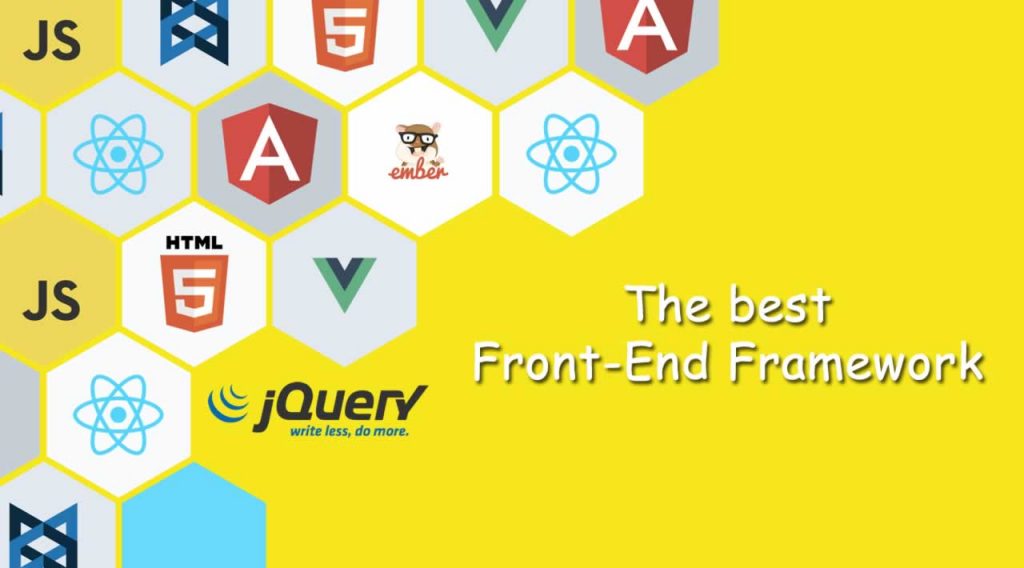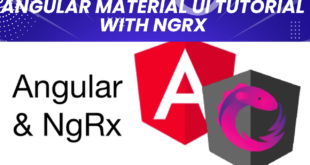What is Front-End Development?
Everything that users touch, use, click, and see, including UX/UI, visual layout, user interface, and interaction, comes in front-end development. It is also sometimes known as client-side development.
In front-end development, HTML, CSS, and JavaScript are used for web applications or websites for the user to directly see and use them. The challenging task with the front-end development is learning the techniques and tools that are used to develop the front end of the webpage or whole website.

The developer must be aware of the recent changes and how this field is constantly developing to accommodate web designing accordingly. The objective of front-end development is to provide information in a proper format that is easy to get when visitors open a site.
It becomes more complicated now as there are various devices with different resolutions and screen sizes. Thus, designers need to take these aspects into consideration while creating a site. Moreover, they have to make sure that the website appears correctly in cross-browsers, cross-platforms, and cross-devices as well. This requires planning carefully on the side of the front-end developer.
Why is front-end development popular these days?
No business can succeed or even sustain itself if it is not online with a strong website presence. Due to this increase of Startups and the use of smart devices that are web-based and app-based for businesses, front-end development is highly in demand. Any application, whether its apps or a commercial website, requires front-end development.
On the other side, web design, development, and maintenance are the most in-demand and exciting skills for front end developers now.

How to become a front end developer?
If you want to step into the front-end development career, you must have a thorough understanding of the web building blocks that is HTML and CSS. Before applying for a front end developer job, you must have knowledge and practice of effectively structuring a website, styling it with CSS, and controlling the features with scripting.
Here are some other requirements that are needed to become a front-end developer:
- Good eye for detail
- Good creative skills
- Education
- Ability to write code for long hours
Degree, Certification, and Courses
Though many firms and organizations do not require a degree when hiring a front-end developer, having one adds a bonus. A degree is more beneficial when you want to move for higher-paying front-end development positions or switch your career in other directions.
Employers favor candidates with a bachelor’s degree in software engineering, computer science, and other IT-related programs. Besides, if you do not have a degree in a related field, you can learn front-end development by enrolling in web design courses and get a certification.
Remember, just having a degree or front-end development certification is not enough but having them on your resume increases your worth, especially when you negotiate for promotion or pay.
Improve Your Coding Skills
Experts from this field recommend that beginners invest time in mastering semantic codes, modular CSS, learning more about command-line skills and verbs of HTTP, and using CSS pre-processors.
Other important areas that require a solid command include improving coding skills in jQuery and JavaScript, learning client-server architecture, and mastering DOM traversal Method.
Work On Your Portfolio
No matter how much front-end developer job is in demand, the competition is high in entry-level jobs. Those candidates are preferred who have an impressive portfolio of completed web design projects.
If you do not have one, start from the small tasks. You can also take smaller jobs on different freelancing sites like Upwork, Fiverr, or Guru. You can also develop your own website to showcase your skills in your portfolio.
Technologies to learn in front-end development
There are four primary languages that front-end developers must learn to code to create website and web app designs:
- HTML
- CSS
- jQuery
- JavaScript
Let’s have a brief discussion on them:
- HTML: Hypertext Markup Language (HTML) is used to create websites and web apps to run in the common web browser. In HTML, you define a data structure in a document and gives control over the document presentation.
- CSS: Cascading Style Sheets (CSS) defines how to display HTML elements. Like HTML, CSS is also the basic building block of front-end web development. In CSS, presentation and content are separated. It allows the style to be used and defined in the entire application.
- JavaScript: You can add a ton of functionalities to websites with the help of JavaScript. Besides, you can create many basic web apps by coding in JavaScript.

At a very basic level, JS (short for JavaScript) is used to develop and control things that need real-time updates like maps, online games, and interactive films. JS is one of the most popular languages in the world. Thus, regardless of the web developer’s career learning, JS is a valuable thing.
- jQuery: It is a library of JavaScript applications. jQuery is the collection of extensions and plugins that makes the development of JavaScript easier and faster. It offers developers ready-made elements to add to the projects instead of coding them from scratch. These include plugins like countdown timers, grid layouts, or search from autocomplete, etc.
- ReactJs: It is an open-source JavaScript library developed by Facebook to build and enhance user interface (UI). ReactJS makes webpages highly responsive and dynamic to the user by rendering UI components. It is used as a base in the development of mobile applications or single-page. Due to its revolutionary approach, its library has become extremely popular and brings a significant change in frontend development.
- Angular: It is an open-source framework that is used mainly for creating single-page web apps, web apps, and hybrid apps. This toolkit is developed and maintained by Google and is built on Typescript. It includes everything that developers need and uses to develop large-scale apps. Some leading businesses such as BMW and Xbox choose Angular for frontend development.
- VueJs: It is a progressive JavaScript framework that is used to build one-page applications and web interfaces. Vue.js with Electron framework is also used for the development of mobile and desktop apps. The JS base and HTML extension made famous brands like Alibaba, Xiaomi, Behance, and Adobe adopt Vue.js.
- Bootstrap: It is a popular CSS Framework used to develop mobile-first and responsive websites. It makes web-designing easy and faster. Its newest version is Bootstrap 4. Except for Internet Explorer 9, it is compatible with all major web browsers. Websites developed with Bootstrap can be adjusted easily on desktops, tablets, and phones.
Front-end tools and software
A front-end development tool is a software application used to easily develop attractive websites and layouts. The web development process is accelerated with the help of these tools as they provide drag and drop options and various other built-in features to make the website layout more attractive.
Here are some front-end web development software described briefly that helps the development work to execute faster.
- Web-pack: It is a module bundler used to bundle Node projects like any app you create in React. Webpack takes all the modules and transforms them into code to read and execute. It is now the most critical tool in modern web development and offers more control over HTTP requests, and enables users to consume packages from npm easily.
- SASS: Stands for Syntactically Awesome Style Sheets; it is a CSS preprocessor and a scripting language that compiles into the CSS to make style sheets more elegant, faster, and more manageable. SASS helps organize style sheets in a useful and maintainable manner for large code bases by adding new tools and features.
- NPM: Stands for Node Package Manager; it is the package manager of Node.js by default. It is installed on the system when you install Node.js and can be accessed from the command line interface. Its installation is easy and compatible with various browsers like macOS, Linux, Windows, and more. It comes with multiple configuration options and extensive documentary.
- Yarn: It is a front-end package manager and can be used as an npm’s alternative. Users need to install Node.js before installing Yarn as it is a package of Node.js. Yarn is famous for ultra fast developments, caches every package to speed up the building process, and runs in parallel, thus, recommended for heavy users.
- Babel: It is a JavaScript compiler and a tool chain used to convert ECMAScript 2015+ code into JavaScript backward compatible version in old and current browser environments. In terms of transpiring, it is a very flexible tool. Babel supports the latest JavaScript version through syntax transformation.
Career prospects for front-end development
US Bureau of Labor Statistics says that web development jobs from 2019 to 2029 are projected to grow 8% in the USA. Among other occupations, this growth is much faster. Not only in the US, but this trend will be seen in other countries of the world as well.
Whether a big or small setup, every business needs a website and constant changes in it over the period. Therefore, companies are looking for candidates with expertise in website design and development.
Whether you are boarding on a new chapter of your career or just started your professional life, there are endless career prospects in the front-end development industry. These include web designing, app development, front-end development, web content strategist, and web integrator, just to name a few.
These days, these are the highly in-demand jobs. On average, in the USA, the salary of a front-end developer is about $108,874.
Online resources to learn front-end programming languages.
Due to rapid changes in the development field, it is necessary for the front-end developers to keep up with the new trends and techniques. It is a demand of the industry to enhance your skills and knowledge about the new development tools.
Also, with studies and current jobs, it becomes difficult to join courses. For this purpose, many learning websites are offering online courses in web design and other related areas. Here are some of the online resources to learn front-end development and other web design tools and techniques:
1. CSS Grid Playground
It is a Mozilla team’s production. CSS grid playground is the visual guide that helps the user learn new grid layout features of CSS. They have lots of demos and code examples. This guide is very helpful, especially for beginners who just started with the CSS Grid.
2. Stack Overflow
It is one of the best places on the internet to learn front-end development and get your related issues solved. You can also find the solution for your coding problems at Stack Overflow along with the online coding tools.
3. Coursera
It is an online platform that offers courses from top universities all over the world. They offer basic web design and web development courses as well as specialization in them. Real professors from universities taught these courses and grant certificates upon course completion, making Coursera one of the best and trustworthy online learning resources for web developers.
4. edX
This platform is the creation of MIT, Harvard, and more, thus featuring university-level micro degrees, courses, and professional certificates. edX courses cover a wide range of web development and related academic topics.
5. Pluralsight
It offers hundreds of video courses on front-end development, including in-browser coding, hands-on projects, learning paths, and webinars.
Wrapping Up
High demand in industry, flexibility, and substantial salaries makes front-end development a great career choice. Whether you are taking a turn in your professional life or just starting your career in front-end development, there is a lot you can learn and use it to earn better. You can work as a freelancer, enjoy a position in an IT company, or even a big business with an in-office IT team.
Related Articles:
- What is Devops? All You Need To Know About Development Operations
- Best CRM for Developers to Learn in 2021 – a beginners guide
- 11 Best Freelancing Platforms for Web Developers in 2021
- Best CMS for web developers to learn in 2021 and beyond
- Top IT Certifications for Professionals in 2021 and beyond
 Best Tech Blog For Programming Articles And Video Tutorials Code Is Easy
Best Tech Blog For Programming Articles And Video Tutorials Code Is Easy


